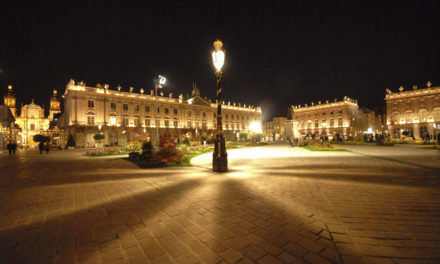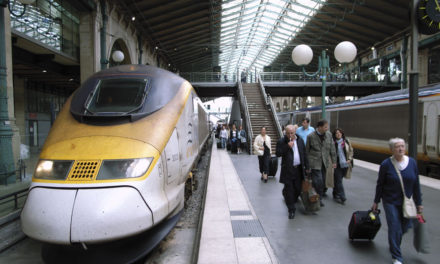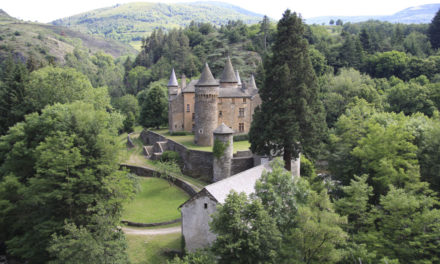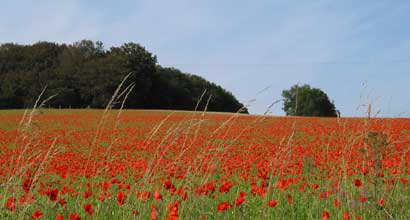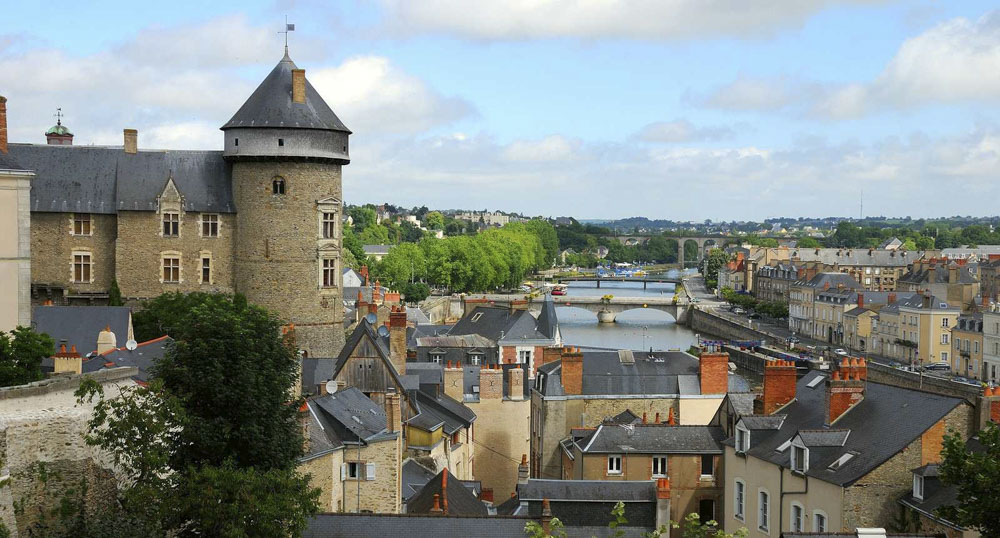
A peaceful rural department, the Mayenne sandwiched between Normandy and the Loire valley has three principle towns. In the north Mayenne, like the department, is named after the river which meanders through the countryside. To the East, Les Alpes Mancelles, or Alps of Le Mans, is a green and hilly region of fruit trees, grazing sheep and streams, although hardly alpine in the strict sense of the word. St-Céneri-le-Gérei with its Romanesque church containing 12/14th century frescoes perched on a hillside and St-Léonard-des-Bois which also has a Romanesque church are just two of the prettiest villages. Amongst the 230 towns and villages listed, Juvigné is a prime example of the ‘village fleuries’ having won many prizes including the European gold medal.
Towns in the Mayenne
Book a Hotel in the Mayenne
Book a holiday cottage in the Mayenne
Laval
Laval which straddles the river Mayenne has an imposing 11th century Château dating from the era of the Count of Anjou, Foulques Nerra. Originally part of his defences against the marauding Normans and Bretons, it retains its medieval keep and houses the Musée d’Art Naif, partially inspired by Henri Rousseau, a native of Laval known as ‘Le Douanier Rousseau’. In the old town, the Cathedral has Aubusson tapestries and Laval has one of the few remaining floating laundries of France, the Bateau-Lavoir St-Julien, now a museum. Nearby, Joublain is the largest Gallo Roman site open to the public in the West with its temple, fortress, thermal baths and theatre.
Ste-Suzanne
East of Laval, the pretty village of Ste-Suzanne is one of the ‘Petite Cité de Caractère’ to be found in the region. Perched on a hilltop, the 10th century keep is all that remains of the original Château which once withstood an attack from William the Conqueror. The present castle dates from the 17th century and there is a museum charting local history. To the south at La Frénouse is an unusual museum of the artist, Robert Tatin, who was influenced by megalithic and Aztec art, having travelled in South America for five years. It features a series of huge concrete figures depicting such characters as Picasso and Toulouse Lautrec and some 400 examples of Tatin’s work.
Château-Gontier
The bell tower of the Church of Saint–Jean-Baptiste, once a Benedictine priory, with its vaulted wooden nave and remarkable crypt, dominates Château-Gontier with ‘Faubourg’ on one side of the River Mayenne and ‘Haute Ville’ on the other. One can visit the Ursuline Convent with its new theatre, the ‘jardin du bout du monde’ and many other attractions including an animal refuge conceived twenty years ago for wounded or abandoned animals with over 800 inhabitants from domestic to wild and exotic beasts. At the other end of the spectrum the town has, since 1652, been the venue for a veal market which today is the largest in Europe, meeting every Thursday. Nearby the 18th century white stone Château at the medieval town of Craon is a perfect example of the architecture of this period and is open to the public as well as having ‘chambres d’hotes’. Set in 40 hectares, it has superb gardens.
| Title | Address | Description |
|---|---|---|
MAYENNE | Mayenne, France |


